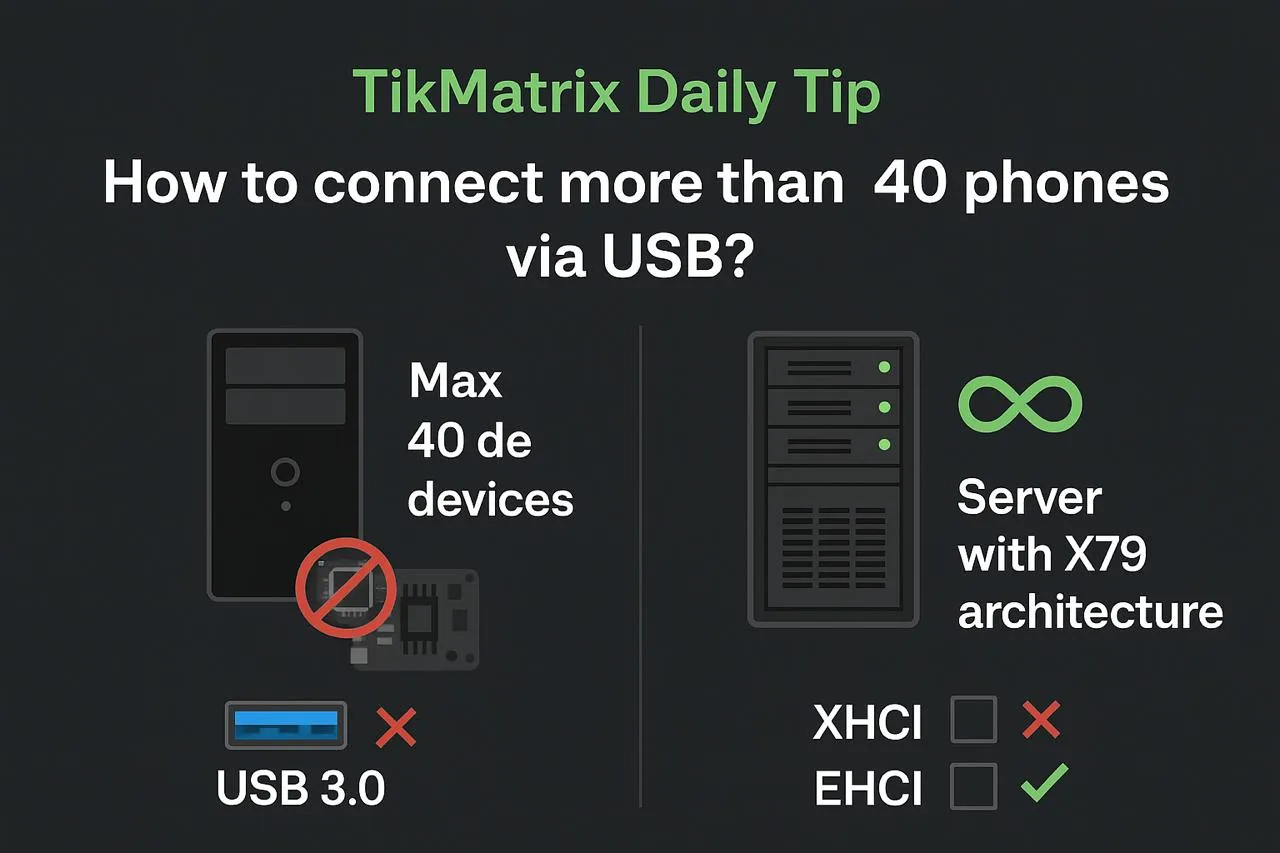Why You Can’t Connect More Than ~40 Phones to a Regular PC
USB supports 127 devices per host — on paper.
In reality, most consumer motherboards hit a wall around ~40 devices due to chipset/firmware limits and hub topology.

🧠 1. The Theory vs. The Reality
- Spec sheet: One USB host can address up to 127 devices (including hubs).
- Real world: Consumer boards often cap out around 30–45 phones because of:
- Host controller firmware limits
- Chipset path congestion (shared lanes)
- Hub depth/topology constraints (tiers, power)
Bottom line: The limit is rarely the OS — it’s the controller + board design.
🖥️ 2. Why Server-Grade Boards Scale Better
Server/workstation boards (e.g., X79 class, HEDT platforms) commonly:
- Provide more root host controllers
- Have fewer firmware caps on device fan-out
- Offer better lane allocation and power stability
Result: It’s realistically possible to exceed consumer-board ceilings with the same OS and hubs.
🔌 3. Practical Wiring Tips (Get More Devices Recognized)
- Use rear I/O ports (direct traces to the motherboard) rather than front-panel headers.
- Prefer USB 2.0 (black) for large farms; avoid USB 3.0 (blue) paths that can be finicky with many MTP/ADB devices.
- BIOS setup:
- Disable XHCI
- Enable EHCI
This forces stable USB2 host paths that enumerate big farms more reliably.
Power matters: use powered hubs (quality bricks), short high-quality cables, and spread the load across multiple root controllers.
🧩 4. Topology & Power Checklist
| Vector | Recommendation | Notes |
|---|---|---|
| Hub tiers | ≤ 3 tiers deep | Too many cascades = timeouts |
| Hub choice | 7–10 port powered hubs | Separate PSU per hub bank |
| Cable | Short, shielded | Replace flaky leads early |
| Ports | Rear I/O first | Front headers share paths |
| Mix | Keep phones on USB2 paths | Reserve USB3 for storage only |
🧪 5. Quick Troubleshooting
- Phones connect/disconnect randomly: Power budget or bad cable → swap PSU/cable.
- New devices stop enumerating at ~38–42: Controller limit → move hubs to different root ports / add a second controller card / switch to server-grade board.
- High CPU during ADB scans: Too many devices on one controller → rebalance hubs across ports.
⚙️ 6. Recommended Config for TikMatrix
- Board: Server/HEDT (e.g., X79-class or newer workstation chipsets)
- Hubs: Multiple powered USB2 hubs on different root ports
- BIOS: XHCI Off, EHCI On
- OS: Standard Windows with ADB drivers; keep WebView/graphics stable for multi-screen
🏁 Conclusion
Yes, USB can address 127 devices — but consumer boards hit firmware/chipset walls near ~40.
Use rear USB2, powered hubs, and EHCI-first BIOS — or go server-grade to scale far beyond.
This guide reflects practical phone-farm builds and enumeration tests with TikMatrix.
